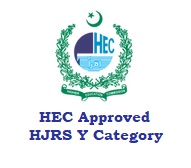Conservation of the tomb of Safi-ud-Din Garzoni at Uch Sharif, district Bahawalpur, Punjab, Pakistan
DOI:
https://doi.org/10.47264/idea.nasij/4.1.3Keywords:
Conservation, Heritage, Monument, Uch Sharif, Tomb, Elements, InterventionsAbstract
Urban spirit assessment and its value are crucial globally in developed countries when it comes to protecting heritage, and the same should be taken into consideration in developing countries as well. Due to their dynamic nature and ongoing evolution, historic cities present a more challenging assessment. In Pakistan, several historical buildings have been the custodian of regional cultural and architectural heritage for many decades. They are currently in bad condones and require immediate conservation/restoration to keep them alive for the next generations. Uch Sharif has a long history of religious and architectural significance. Monumental tombs are the container for a city's most significant social, cultural, and architectural characteristics. However, they must contend with several degrading processes, including weathering, vandalism, a lack of organized mechanisms for maintenance and repair, and improper use by various stakeholders. This paper attempts to conservation of a 13th Century monument in Uch Sharif, namely the tomb of Safi-ud-Din Garzoni. It is a marvellous combination of many civilizations in the form of its architectural styles and significant element and construction techniques. The study's findings, in the form of proposed interventions, will apply to other overlooked monuments in Uch Sharif and other cities throughout Pakistan.
References
Ahmed, M. (2012). The long thirteenth century of the Chachnama. The Indian Economic & Social History Review, 49(4), 459–491. https://doi.org/10.1177/0019464612463804
Al-hagla, K. S. (2010). Sustainable urban development in historical areas using the tourist trail approach: A case study of the Cultural Heritage and Urban Development (CHUD) project in Saida, Lebanon. Cities, 27(4), 234-248. https://doi.org/10.1016/j.cities.2010.02.001
Ali, I., Ahmad, I., & Shah, M. W. (2020). Exploring sustainable structural interventions in the traditional historical buildings: A case of educational institutes in the Province of Punjab, Pakistan. Sindh Antiquities, 06(02), 80–92. https://saj.sindhculture.gov.pk/index.php/11-latest-issue/38-sindh-antiquities-bi-annual-journal-vol-6-no-01-2022
Allchin, B., & Allchin, R. (1982). The rise of civilization in India and Pakistan. Cambridge University.
Arshad, S., Malik, M. N., & Malik, M. (2017). Spatial dimensions of urban growth and land use changes in a small city of Bahawalpur District, Pakistan. Universal Journal of Engineering Science, 5(2), 17-28.
Ashraf, Z., Kamal, S., Abid Maan, Y., Shahbaz, S., & Haq, M. (2022). Architectural Conservation Plan of Baha-ul-Haleem’s Tomb, Uch Sharif. Journal of Art, Architecture and Built Environment, 5(1), 92-120. https://doi.org/10.32350/jaabe.51.05
Bell, J. S., & Böke, H. (2010). Comparing the old and new: traditional building materials and the Uch Monument Complex, Pakistan. Conservation and Management of Archaeological Sites, 12(2), 107-123. https://doi.org/10.1179/175355210X12792909186377
Cheema, Y., & Bell, J. S. (2013). Integrated investigation, assessment, intervention design, and implementation as a model for conservation practice. Conservation and Management of Archaeological Sites, 15(3-4), 348-368. https://doi.org/10.1179/1350503314Z.00000000066
Erkal, A., & Ozhan, H. O. (2014). Value and vulnerability assessment of a historic tomb for conservation. The Scientific World Journal, 2014, 357679. https://doi.org/10.1155/2014/357679
Erkal, A., D’Ayala, D., & Stephenson, V. (2013). Evaluation of environmental impact on historical stone masonry through on-site monitoring appraisal. Quarterly Journal of Engineering Geology and Hydrogeology, 46(4), 449–458. https://doi.org/10.1144/qjegh2012-060
Hamamcioglu-Turan, M., & Akbaylar, I. (2011). Documentation of historic structures for the assessment of heritage characteristics. Journal of Architectural and Planning Research, 28(2), 129–151. http://www.jstor.org/stable/43030934
Khalid, S., & Gilani, A. H. (2010). Distinctive cultural and geographical legacy of Bahawalpur. Pakistaniaat: A Journal of Pakistan Studies, 2(2), 1-17. Distinctive Cultural and Geographical Legacy of Bahawalpur | Pakistaniaat: A Journal of Pakistan Studies
Khan, A. N. (1987). Naked Brick Architecture of Early Islamic period of Pakistan: An Analytical study. Pakistan Archaeology, 23, 1987-1988. ojs.uop.edu.pk/ancientpakistan/article/download/306/284/551
Mohyuddin, Z. (2019). Sufis of Uch: A historical study (1200-1600). PhD Dissertation, Quaid–e-Azam University, Islamabad. Zafar-Mohyuddin-history.pdf (siraiki.com)
Parisi, F., & Augenti, N. (2013). Earthquake damages to cultural heritage constructions and simplified assessment of artworks. Engineering Failure Analysis, 34, 735-760. https://doi.org/10.1016/j.engfailanal.2013.01.005
Riegert, M., & Turkington, A. (2003). Setting stone decay in a cultural context: conservation at the African Cemetery No. 2, Lexington, Kentucky, USA. Building and Environment, 38(9-10), 1105-1111. https://doi.org/10.1016/S0360-1323(03)00087-8
Rakum?n?, A., & Tirmizi, M. A. (1991). Sultanate period architecture: Proceedings of the seminar on the sultanate period architecture in Pakistan, held in Lahore, November 1990. Anjuman Mimaran. https://books.google.com.pk/books?id=1RvqAAAAMAAJ
Downloads
Published
Issue
Section
License
Copyright (c) 2023 Jam Ayaz Mahmood, Iftikhar Ali, Muhammad Yusuf Awan, Mir Wali Shah, Qasim Ali Shah

This work is licensed under a Creative Commons Attribution-NonCommercial 4.0 International License.
Please click here for details about the Licensing and Copyright policies of NASIJ.








